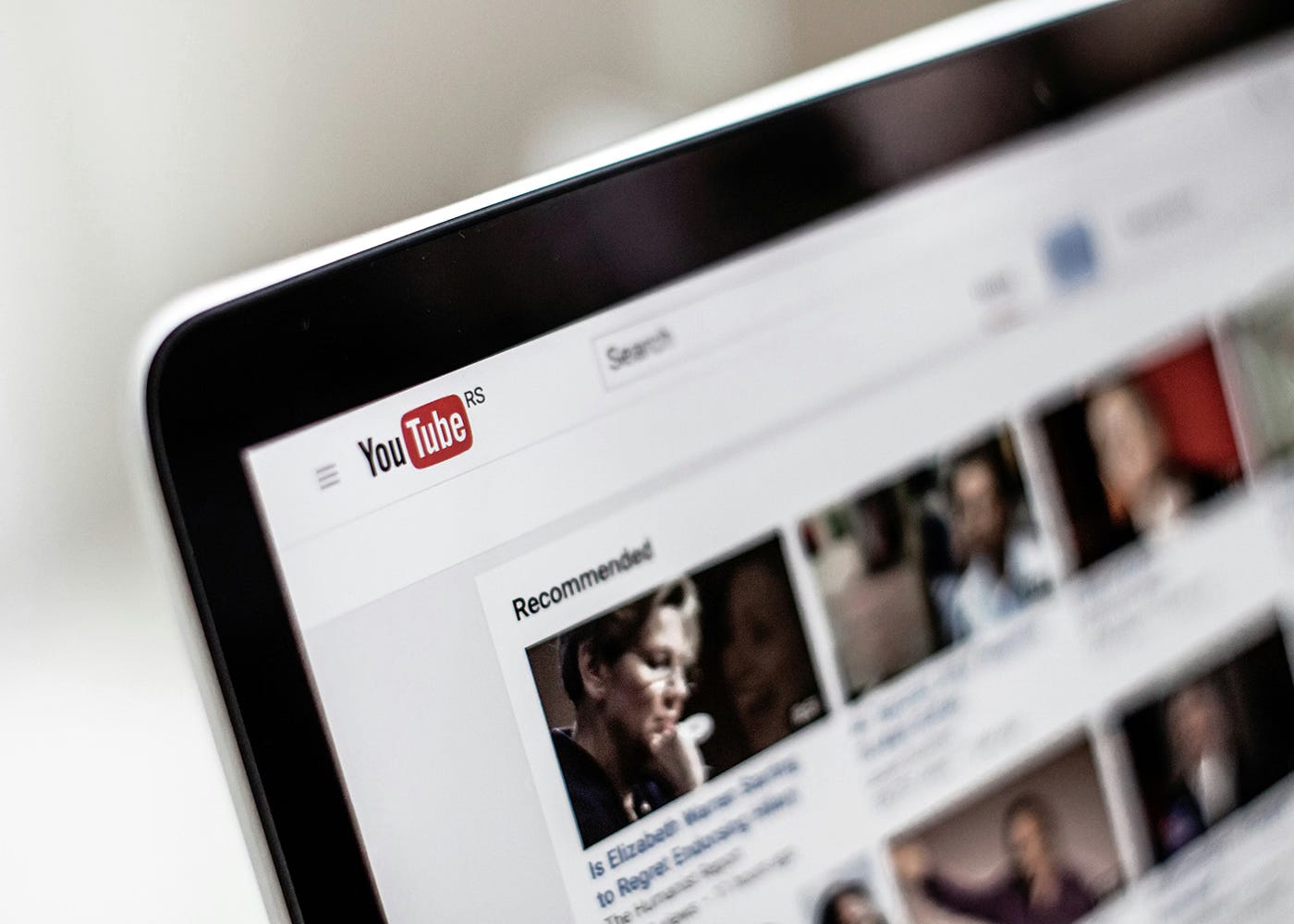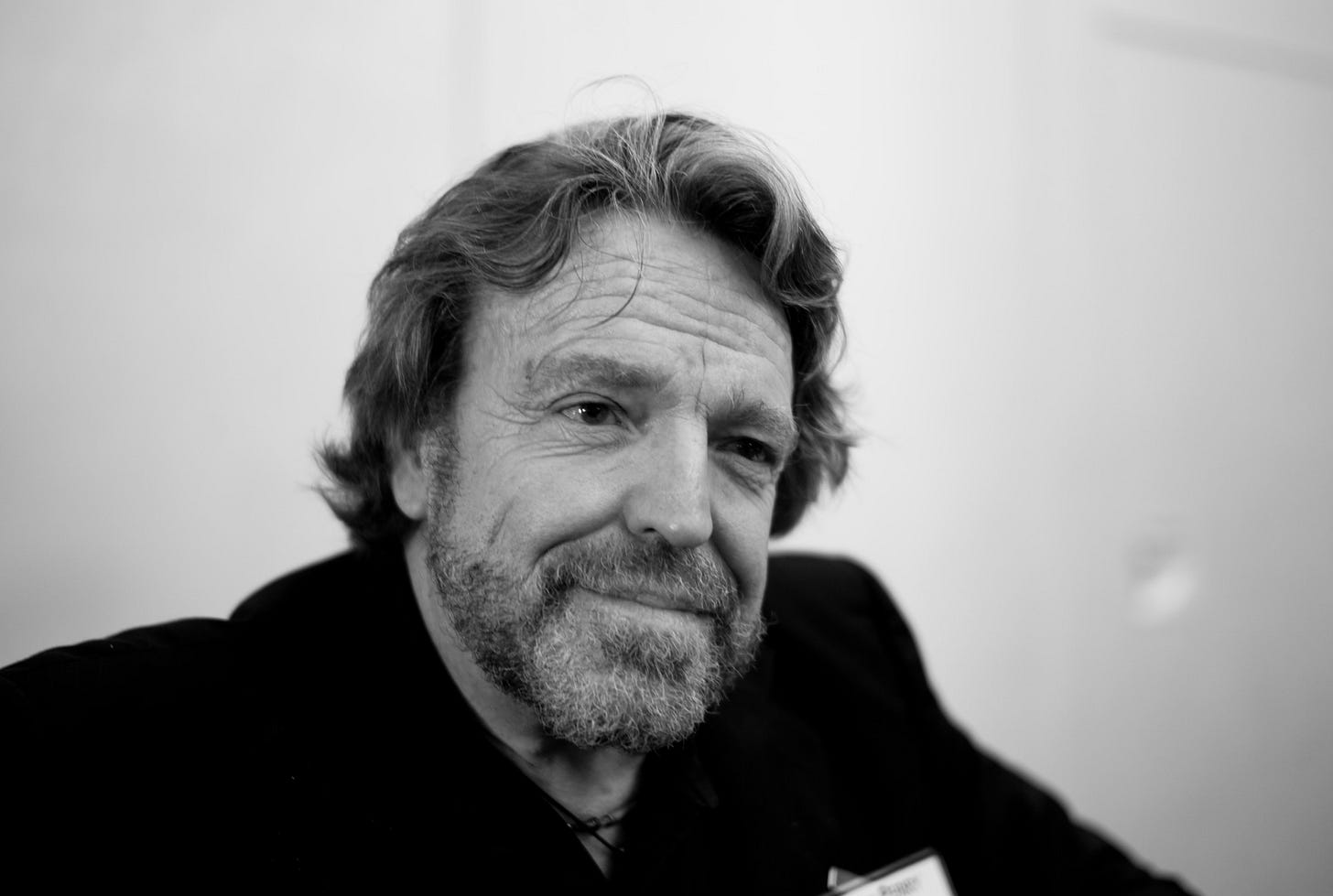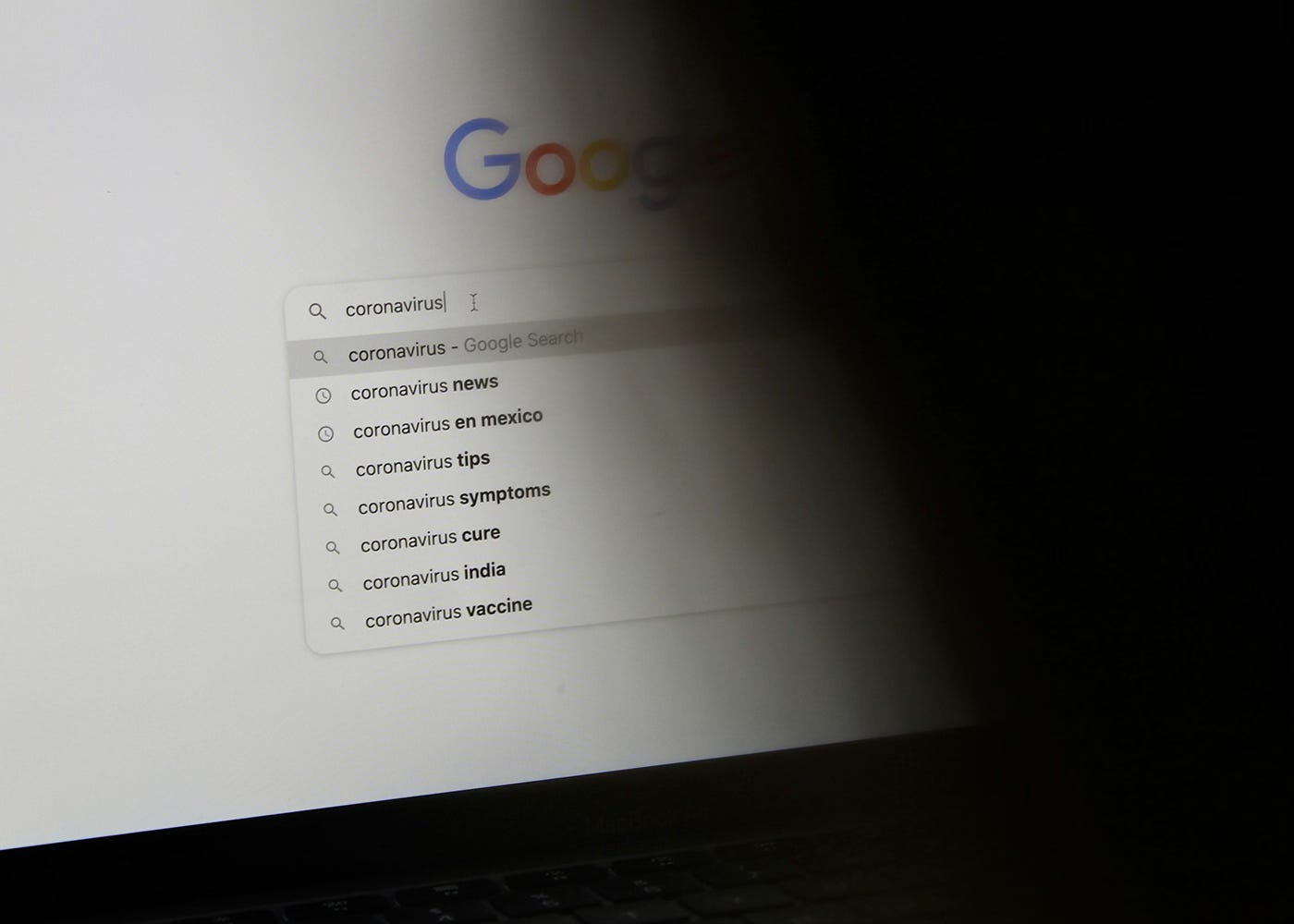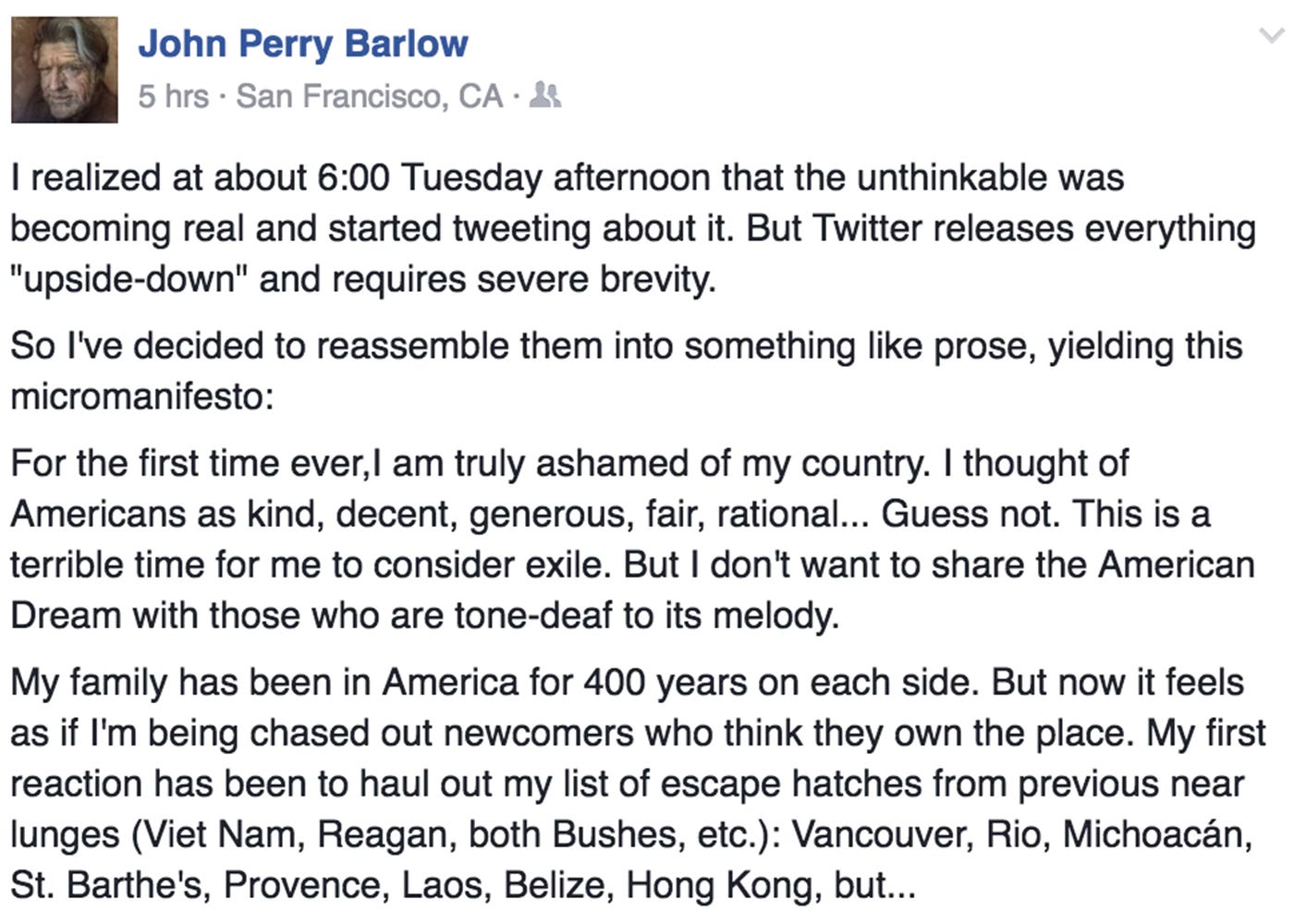Techno-Fascism Part#6: Rise of the Right
For the first time ever, l am truly ashamed of my country. I thought of Americans as kind, decent, generous, fair, rational... Guess not.
-John Perry Barlow, Facebook, November 21st, 2016.
Caleb is an unhappy kid. He arrives home from school each day and rushes to where he belongs - his computer, and his friends, laughing and shouting together through their virtual gamescapes. Caleb isn’t with them, he’s never met and will never meet many of them; kids don’t get together to play games anymore, they do it alone, together online.
As the late hours gather in, and his friends’ gaming handles wink off the screen, Caleb heads to YouTube, where he falls asleep watching videos by “New Atheists” - Richard Dawkins, Christopher Hitchens; he describes finding them “subversive” and “edgy”, a means of stimulating his thought beyond the stultifying conformity and prospectless routines of his life in America during the early Obama years, shortly after the 2008 crash.
Caleb enrols in college, where his experience is a miserable one. He finds it difficult to socialise and spends an escalating number of his waking hours online, which further degrades his ability to socialise. By his early 20s Caleb has plunged into depression, he lives in his grandparents’ home, where he remains, refusing to exit into the light outside, cycling instead through anonymous hours of waking and oblivion in front of his computer, scanning and hoping for hope, searching cyberspace for an answer to the blunt ache of his depression, and the hunger of isolation.
He finds relief on YouTube, in videos by self-help gurus and the Canadian libertarian Stefan Molyneux. Molyneux explains to Caleb, and millions of others, that his alienation is the fault of society. Molyneux broadcasts glowing depictions of his own stable, rewarding family life with advice on how others can achieve it, Caleb desperately wants to achieve it; the ache of depression becomes an ache for stability, and family. For human connection, rather than the cyber-utopians’ virtual society.
When YouTube stops limiting video durations to 15 minutes, Stefan Molyneux begins pumping out monologues of one hour, two hours, to his captive, yearning audience.
Caleb finds Molyneux’s exhortations useful, his long night begins to recede, and he emerges, blinking, into the sun. He finds a job, his confidence improves, he reintegrates into society; to a point - Caleb continues to watch YouTube 10-14 hours a day.
Initially, the YouTube algorithm prioritises clicks – the more clicks, the better the video must be. But this encourages a deluge of click-bait, which induces users to leave the website in frustration, so YouTube adjusts its algorithm to favour total watch time, which pulls its content and users into a feedback loop – the more the user watches of a particular video, the more YouTube seeks to stimulate the user and drive engagement by serving them with limitless iterations of that video: similar content, similar themes, similar perspectives.
An engineer at Google, alarmed by the polarising and self-reinforcing perspectives being served to different groups on YouTube (the incipient “echo chambers”), designs an alternative algorithm that would encourage plurality. YouTube never even tests the algorithm, it reminds the stunned engineer that civic duty is not YouTube’s priority, YouTube’s priority is to increase watch time.
Caleb’s watch time increases. Stefan Molyneux warns about the establishment, he advises vigilance against the lies of the “mainstream media” and its project to enforce politically correct conformity on the free provinces of cyberspace. Molyneux reviles social justice warriors, Molyneux rages about the “Gamergate” conspiracy that has broken out on 4chan, which alleges that young men are persecuted by feminism and political correctness. Caleb is enraged by the social justice warriors, 4chan is enraged, its army of anonymous users launches a war of flaming and trolling and rage. An active section of 4chan’s anons reviles political correctness, and foreigners, and women, and black people. YouTube is awash with Gamergate, Molyneux denounces Cultural Marxism, Caleb watches endless, rage-filled videos. YouTube fears becoming repetitive, it seeks to expand its users’ tastes. The algorithm is re-engineered around an AI technique, “the Deep Neural Network”, which makes connections and perceives patterns that are beyond the capacity of humans. YouTube presents Caleb with a wall of right-wing rage, Caleb watches videos by the plausible, aristocratic racist Jared Taylor, Caleb listens to right-wing propagandists, 10-14 hours a day. YouTube is tireless in its encouragement. Caleb abandons his former admiration for Barack Obama and becomes a fanatical Trump supporter. Caleb has certainty, and self-confidence, and purpose; when asked, Caleb describes his views as broadly aligned with those of Brenton Tarrant, the rage-filled, white supremacist who, armed with a cache of semi-automatic rifles, shotguns and pistols, slaughters fifty-one people in Christchurch, New Zealand. Tarrant livestreams his carnage on Facebook.

Caleb’s story forms part of Rabbit Hole, an eight-episode podcast series by Kevin Roose for the New York Times, which ran shortly after the January 6th, 2020 attack on the US Capitol. The series explores political radicalisation online, and how the design of YouTube and the social networks intensifies political propaganda, disinformation, conspiracy theories and addictive behaviours. Fortunately, the story ends in relief; its coda is redemptive: Caleb is talked down from the Nazi axis by persuasive liberals and now spends his time contributing to deradicalisation initiatives.
Most of us are now familiar with “Caleb” in his phenomenological sense: there has been an inexhaustible, harrowing procession of Nazi Calebs, terrorist Calebs, activist, survivalist, self-denying, self-gratifying, self-hating, self-harming, self-aggrandising, violent, exploitative, delusional, desperate, suicidal Calebs that have sobbed and raged and violated their way through the twenty-first century.
Part of this is attributable to the natural power of the internet to intensify: it takes the divisions, extremities and pathologies that have always existed within society and politics, and amplifies them through volume and proximity. But another part of it lies in how cyberspace has been designed and evolved by Silicon Valley and the major tech companies.
To briefly recap: in this series we’ve traced the ideology of personal computing, as articulated by the techno-hippies, in which there would be an intimate, solipsistic personal connection between man and machine, and in which computers would be tools of personal liberation. We’ve looked at the anti-establishment conspiracism of the ‘60s Counterculture and its insistence that the cyber age would be unregulated and impossible for central authorities to control. We’ve covered the Libertarian utopianism and Randian narcissism which drove the deregulated, market-driven, Neoliberal Capitalism of the Reagan era and beyond, in which many former ‘60s hippies and Leftists were complicit, and which collapsed so spectacularly in 2008. And we’ve examined the Venture Capital models developed in Silicon Valley, which have subverted our economies, concentrated enormous wealth and power into a diminishing number of companies and individuals, constructed an oligopoly, and incentivised the remorseless capture, engagement and surveillance of internet users, i.e. everyone. All of these phenomena have been swept into a cyber cyclone that is wreaking catastrophic damage to our societies.
In part two of this series I quoted the techno-hippie Stewart Brand:
The Counter-Culture’s scorn for centralized authority provided the philosophical foundations of the entire personal computer revolution. The freaks who design computer science will wrest power away from the rich and powerful institutions. Computers are coming to the people. This is good news, the best since psychedelics.
What has in fact happened, it has become clear, is that far from wresting power away from “the rich and powerful institutions”, the “philosophical foundations of the personal computer revolution” have instead created institutions that are richer and more powerful than almost any that existed at the time Brand made his predictions. And this, in turn, created an enormous opportunity for the extreme Right.
Libertarian-authoritarianism and the New Right

As we have seen, the ideal conditions for the rise of the populist Right were set when deregulated capital collapsed the global economy in 2008. The Otaku and “Netto Uyoku”, “net-rightists”, that had appeared in 90s Japan as a consequence of economic depression, were replicated in the west – Caleb is an example. The difference from 90s Japan is that the dislocations of 2008 intersected with web 2.0, the social media age, and the era of manipulative algorithms; anyone reading this will, I’m sure, be broadly familiar with the compulsive behaviours and radicalisation that those algorithms have stimulated. It was a combination that opened a new political space, in which a modern populism on both the Left and the Right could flourish, but because of money, cynicism, sophistication, and the beguiling simplicity of its message, the Right was, as is typical, better at seizing the opportunity.
The failure of Neoliberalism was perceived by those on the Right, who shared many of the criticisms articulated by the Left: that an unsustainable debt economy had loaded pressure onto the working and middle classes; that the beneficiaries were a small band at the top, who managed to evade responsibility for their failures and refused to bear the costs; that the legacy of the War on Terror had been devastating; that globalisation had produced too few winners and too many losers; that political power had become unaccountable. Once Neoliberalism was resurrected, post-crash, in its zombie form, a perception emerged of a rigged game organised to benefit an “elite”, an elite which was no longer conceived of in purely material terms.
This is a theme that I explored in Lessons from the Counterculture:
Both Left and Right can arrive at the same diagnosis, but that diagnosis is far less important than prescription, it is prescription that is the active zone of ideology, ambivalence on the part of the Left is the great opportunity for the Right, which will exploit an irrefutable diagnosis to obscure the mendacity of its appealingly simple, and appalling, prescriptions.
For the Right, that prescription was a traditional mix of extreme nationalism, an assault on liberal cosmopolitanism (reformulated as “the elites”), and a system of laissez-faire Capitalism enforced by a small, authoritarian state in which power is concentrated in the executive.
What emerged was a strange and novel species of Libertarian-authoritarianism. In material terms, the Libertarianism was framed as basic laissez-faire Capitalism, albeit with a protectionist angle that Steve Bannon and his ilk describe as “economic nationalism”: hostile to globalisation and international trade co-operation, but in favour of deregulation and tax breaks for corporations and the wealthy.
But far more profound than its economic prospectus, was the New Right, or “Alt-Right’s”, emphasis on culture, and its narrative that an “elite” class of irreligious, internationalist liberals had destroyed noble traditions and shared values through a self-serving programme of universalism, equality and political correctness which prioritised the least deserving in society at the expense of a hard-working majority. This narrative metastasised into the “anti-woke” campaigns, the culture wars and the political projects built around Donald Trump, Brexit, and nationalist movements in the western democracies, which we are all by now wearily familiar with.
The language of dictatorship, discipline and retribution suffused the politics of the New Right, and yet the Right repeatedly characterised the liberal-left, with its regulation of business and consumption, policing of politically-correct behaviour and “DEI” programmes as the true, “Marxist”, authoritarianism. And, in a certain sense, that characterisation was accurate.

In Lessons from the Counterculture, I explored how the positions traditional to both the political Right and political Left had been distorted by Libertarianism, specifically, the type of Libertarianism that emerged from the counterculture of the 1960s and had been inculcated within Silicon Valley; the type of Libertarianism advocated by John Perry Barlow.
The relationship between Libertarianism and authoritarianism is an old one, and was addressed by Marx in his critique of Anarchism. Marx argued that a certain form of Anarchism (a form we would recognise in modern Libertarianism), was premised on individualism, with a focus on the isolated ego and rejection of collective political action and social responsibility. He warned that the consequences of this type of individualism could lead to a kind of social Darwinism in which the strong dominate the weak: an authoritarianism of the individual.
Writing in 2024, Barry Richards, Emeritus Professor of Political Psychology at Bournemouth University, published an article in The Conversation entitled Why have authoritarianism and libertarianism merged? For Richards, the answer to this question lies in the dislocation, atomisation and precariousness of modern life:
As a state of mind, libertarianism is superficially the opposite of authoritarianism…yet there is a history of these two outlooks being intertwined.
Trumpism’s fusion of the authoritarian and the libertarian was embodied in the January 6 attack in Washington DC. The insurgents who stormed the Capitol that day passionately wanted to install Trump as an autocratic leader…But these people were also conducting a carnivalesque assertion of their individual rights, as they defined them, to attack the American state.
A psychological approach can help us to understand the dynamics of this puzzling fusion… authoritarianism and libertarianism are the interchangeable products of the same underlying psychological difficulty: the vulnerability of the modern self.
Both outlooks serve to protect against the potentially overwhelming sense of being in a society on which we depend but which we feel we cannot trust. While politically divergent, they are psychologically equivalent. Both are ways for the vulnerable self to ward off existential anxieties. There is therefore a kind of belt-and-braces logic in toggling between them or even occupying both positions simultaneously.
In any specific context, authoritarianism is more likely to have the necessary focus and organisation to prevail. But its hybrid fusion with libertarianism will have broadened its support base by seducing people with anti-authority impulses.
And in its response to the aftermath of the 2008 crash, it was indeed the Right which summoned the requisite “focus and organisation”. While the Left was lost in dreamy notions about freedom and distributed political action trough movements like Occupy, the Right got on top of how power actually works. It pulled together properly integrated political movements under charismatic leadership (MAGA being the most famous example), developed sophisticated new media strategies, “flooding the zone with shit”, as Bannon put it, and relentlessly targeted the Calebs of this world, Bannon’s “rootless white males”, the Netto Uyoku.
Its most powerful tool in this endeavour was the unregulated internet, and in particular the social media networks. As everything from the Cambridge Analytica scandal to the various Facebook and YouTube whistle-blowers who have emerged since have shown us, the money-hungry, growth-focused tech oligopolies were more than happy to sell their user data to the highest bidder, and have the Right exploit their technologies in campaigns of mass manipulation. As Caleb’s example shows, the tech companies’ logic of “engagement”, of trapping people in stimulation and addiction, rewards and amplifies discord, extremity, polarisation. The more people engage, the more disoriented they become, and in turn the more angry, alienated and receptive to the lies, as if wrapped in thorny limbs that tighten as they struggle.
And what of the tremendous economic and political power that the tech companies managed to amass? They deployed it, under the rubric of “internet freedom” and crass, Barlow-esque Libertarianism, to resist any form of regulation or curbs on their omnipotence (including, as it happens, proper taxation), which has deprived our political culture of the means to resist the insurgent extremism and authoritarianism propagated online.
The distributed, unregulated internet that Barlow and his fellow travellers imagined would be resistant to repressive authoritarians in government, and which the military imagined would be resistant to an attack by hostile powers, became the favoured instrument of malign authoritarians and hostile powers, most especially Donald Trump and the Russian state, with its various campaigns aimed at undermining western democracy. As the social psychologist Jonathan Haidt has observed, it is impossible to imagine the political ascent of Donald Trump without social media.
Cyber-Dystopia

“The only law that all our constituent cultures would generally recognize is the Golden Rule [do unto others…]. We hope we will be able to build our particular solutions on that basis”, John Perry Barlow wrote in A Declaration of the Independence of Cyberspace. “The failure of law will almost certainly result in a compensating re-emergence of ethics as the ordering template of society”, he said in The Economy of Ideas. It was all utopian fantasy. Hippie bullshit.
The cyber-utopian dream that the unregulated internet would produce “natural ethics” and define a “new society” in cyber space in fact produced the opposite. Rather than societies, it has created obsessive subcultures; rather than stimulate the “re-emergence” of ethics, it has enabled the most unethical, destructive forces on the planet. Rather than distribute power to the people, it has assembled new, unprecedented, concentrations of power in the form of the tech oligopolies.
Those oligopolies both feed and thrive on the pathologies that they have unleashed. The economic damage caused by their “disruptor” business models increases social atomisation and anxiety, which their social networks and algorithms then in turn stimulate and exploit. Their deregulated, distributed structures are optimally designed for the purposes of bad actors, as is the power superintended by a tiny number of unaccountable, capricious and manipulable oligarchs, as the Trump administration has recently demonstrated. In sum, they have recreated the ideal conditions in which Fascism thrives.
In November 2016, to the horror of liberals, the Left and indeed much of the conservative centre, Donald Trump was elected President of the United States; the culmination of the radical Right’s assault on liberal democracy, combined with the tech-driven collapse of truth and social cohesion. “For the first time ever, l am truly ashamed of my country”, John Perry Barlow posted on Facebook, “I thought of Americans as kind, decent, generous, fair, rational... Guess not”. Barlow died a couple of weeks after Trump’s inauguration.
Barlow doesn’t ever seem to have reflected on his own complicity in the triumph of authoritarianism, and whether the Libertarian philosophies and causes to which he dedicated his life might have contributed to that triumph. His final statement was representative of hippie thought, a kind of shallow homily: “I thought of Americans as kind, decent, generous, fair…”. Well, yes, some can be, some of the time; but not all of them are, and even those that are some of the time, aren’t all of the time. Tellingly, he uses the word “rational”, “I thought of Americans as rational”, he said. And this is where Douglas Engelbart and the techno-hippies’ vision of the personal computer encounters its internal contradiction.
Engelbart and the techno-hippies had conceived of the personal computer as a device which could enhance and augment human ability, an extension of the individual. But within the discipline of computer engineering, which is based on science and rationality, they don’t appear to have considered the human capacity for irrationality, and that computers, given the right circumstances, might serve to augment, facilitate and enhance our irrationality. Online algorithms deliver to the Calebs of the world inflating quantities of what those algorithms think the user wants, no matter how irrational or destructive. In fact, where the internet has been genuinely “self-regulating” in the way that Stewart Brand and John Perry Barlow imagined, is in its ability to desensitise and rewire the human brain in response to the online deluge of shock, filth and depravity.
Perhaps part of the appeal of transgressive online discourse, of the racism, the contrarianism, the trolling – the types of discourses that radicalised Caleb - is precisely that it breaks the dehumanising “systems” and “networks”; the mechanistic self-regulation of humanity promoted by cyber-utopianism, and instead expresses perversity and resistance, the most authentically human elements of the technological age. In context of Barry Richard’s notion of “the vulnerability of the modern self…the overwhelming sense of being in a society on which we depend but which we feel we cannot trust”, it’s easy to see how people are compelled to try to look behind the curtain in order to discover some meaning, particularly when the technologies are designed to validate and encourage them in doing so.

In the introduction to this series, I discussed the conspiracy theories that proliferated during the Covid pandemic, including amongst people that I count as friends:
Returning to the people I knew who embraced conspiracy theories during the Covid pandemic, and who have since been seduced by populism, there was something about them which initially eluded me but which I came to notice: their susceptibility to conspiracy predated the pandemic. Covid set it off on steroids, but it was…something that was already part of their lives and which, during the pandemic, became all-consuming: the habit of spending far too much time on the internet.
The process of online radicalisation operates by stimulating fantasy, and fantasy has become an indelible part of our political era. Covid intensified this phenomenon (online activity related to the QAnon conspiracy, which had begun on 4chan in 2017, tripled during the pandemic), but it was already pervasive within our culture.
Fantasy (and conspiracism) has suffused the computer age, the Libertarianism of the techno-hippies, the dreams of the cyber-utopians, the aspirations of the Silicon Valley oligarchs. And fantasy has always been intrinsic to extreme political movements. In the next part we’ll look at one of the most recent extreme political movements, one which began online, occupies executive offices in Silicon Valley and influences the White House. Its adherents variously refer to it as “Neo Reaction”, “NRx” or, preposterously, the “Dark Enlightenment”. I think it’s more accurately described as Techno-Fascism.




